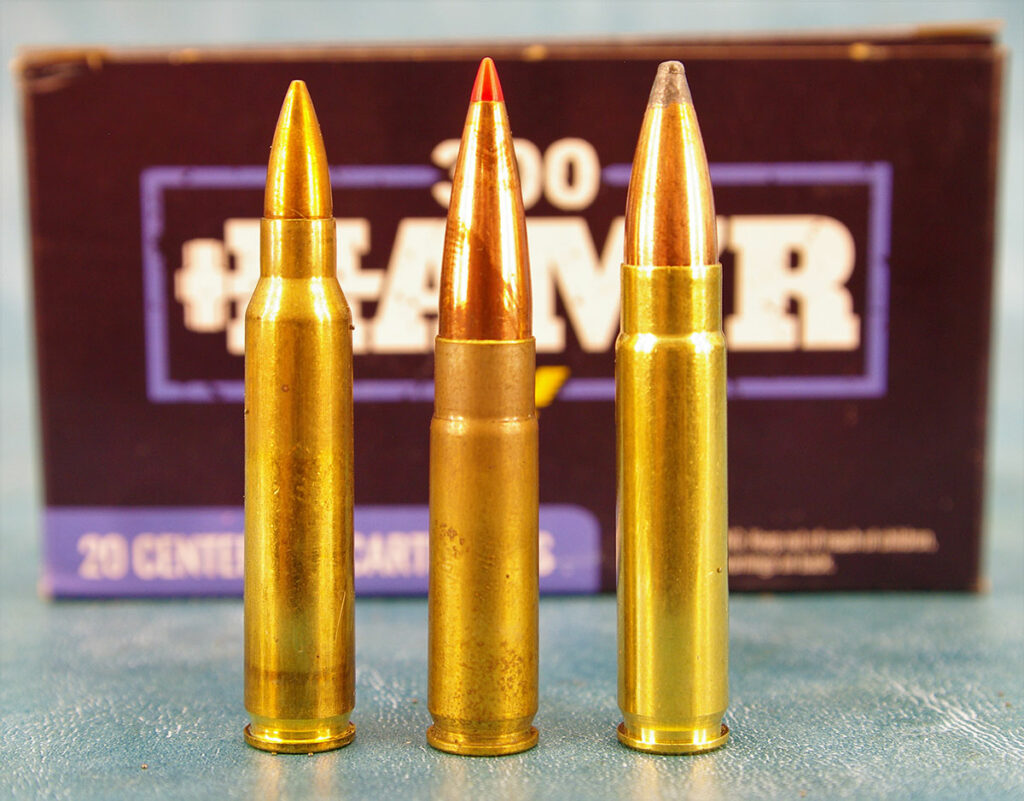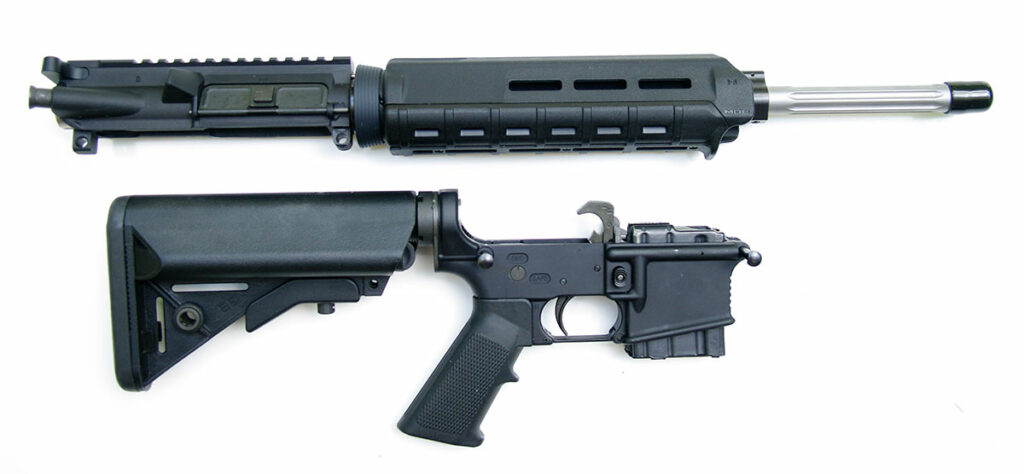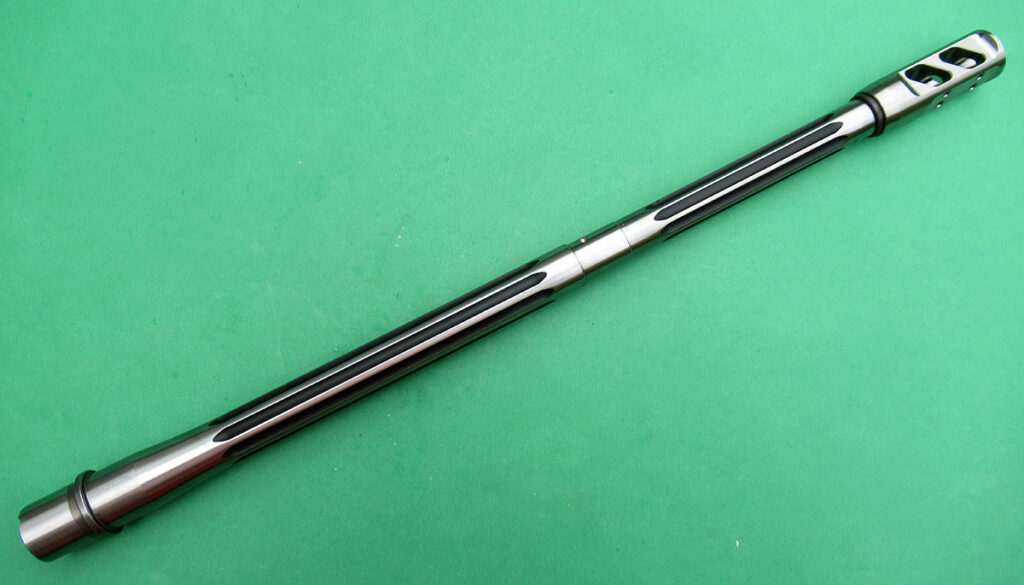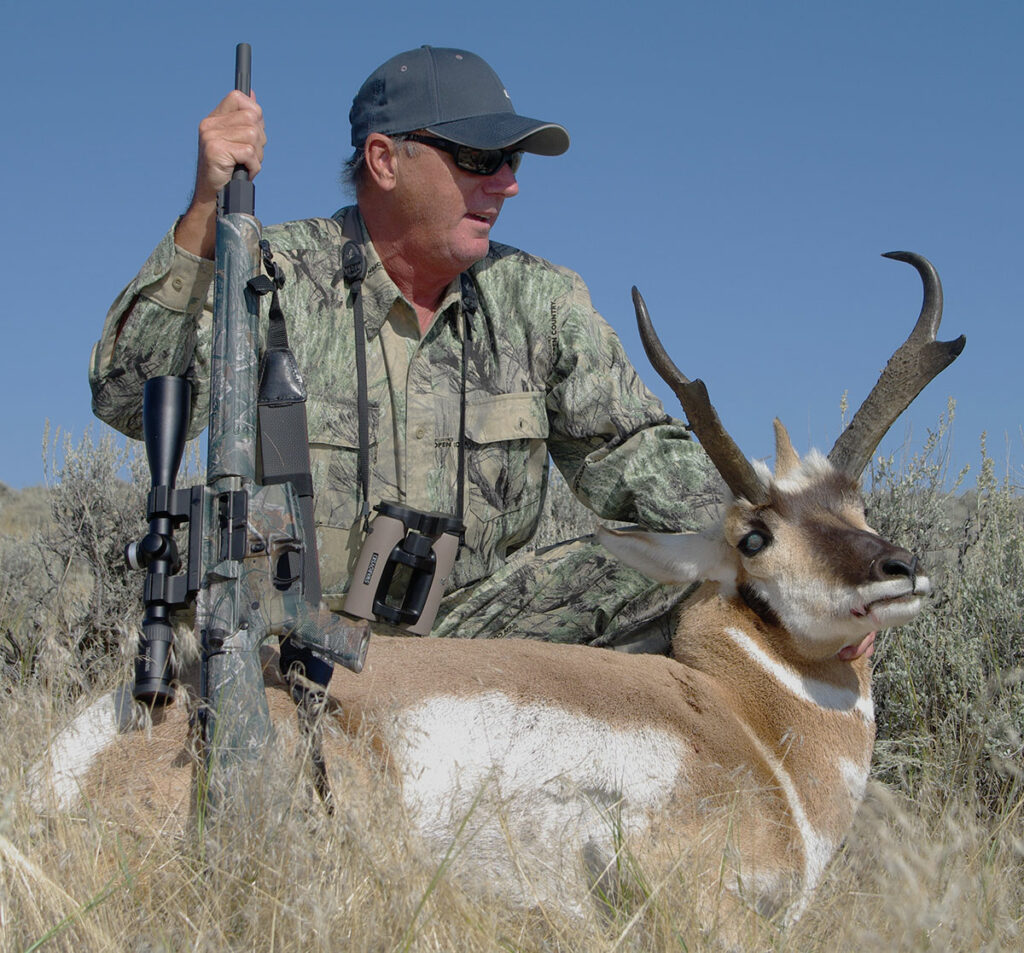HAM-R Time
Anyone who’s read this column on a regular basis knows that I’m not a big fan of ARs as hunting rifles. Don’t get me wrong, I think they can make great hunting rifles for certain hunting applications, it’s just that I’m an old guy and to me a hunting rifle should look something like…well, a Remchester 7000. It could have a synthetic stock, a laminate, even a thumbhole (I’m not that intransigent!) but for me it’s always had to look more or less like a traditional rifle.

I have, however, come a long way since my editors told me I couldn’t ignore ARs any longer (both AR-10 and AR-15). Once I got into them, I was amazed by their ingenious simplicity and the interchangeability of components.
By simply pulling a pin, the upper receiver pivots and the entire bolt assembly can be pulled free for cleaning or replacement. Pull the other pin and the entire barrel/upper receiver is pulled free and can be instantly replaced with another of totally different barrel length, caliber, handguard, sights and attached accessories.
But most of all I was impressed with their accuracy. My experience with semi-auto sporting rifles was such that I didn’t expect the kind of accuracy I was accustomed to with bolt rifles. Wrong! Almost every AR that has passed through my hands over the last 15 or so years proved capable of MOA accuracy or better. So much for preconceptions.
So, as to just how far I’ve come, my weapon of choice for prairie rats, predator hunting and feral hog elimination would be an AR. And I’ve even used them on deer and pronghorn hunts, though they would not have been my first choice. But that too might be changing depending on certain conditions.

Which brings me to the 300 HAM-R, a cartridge that just may be the optimum hunting round digestible in the AR-15 platform. Designed and brought to market in 2019 by Bill Wilson of Wilson Combat, a company known more for its superb pistols, but it’s also well on its way to building the same reputation for its extensive line of equally superb AR-10 and AR-15 rifles. (www.wilsoncombat.com).
Unlike the 300 Blackout which was designed primarily to fire heavy .30 cal. bullets at subsonic velocities in the AR-15 platform, the HAM-R was designed to maximize velocities with bullets in the 100 to 150-grain weight range. Without going too far into the weeds as to how the 300 HAM-R does what it does, suffice to say that its .223/5.56 case is .26-inch longer than that of the Blackout, and Wilson’s bullet choices favor tangent rather than secant ogive, which allow bullets to be seated further out to maximize powder space, yet still fit into an AR-15 magazine.
Believe it or not, Wilson offers 20 factory loads for the 300 HAM-R ranging from a 95-grain bullet at 2,800 fps in a 16-1/4-inch barrel, to a 150-grain at 2,310. The optimum weight range is probably with the 125-135-grain bullets. Because comparisons are inevitable, consider: Wilson’s own 125-grain Hornady load for the 300 BLK is listed at 2,175 fps in a 16-1/4-inch barrel; his 125-grain Sierra load for the HAM-R launches at 2,520. Muzzle energy is 1,315 and 1,765 ft. lbs, respectively.

The 135 loads exit at 2,055 and 2,400 fps, with 1,265 and 1,725 ft. lbs. of muzzle energy, respectively. No other AR-15 cartridge can match that performance with just a barrel switch. Wilson claims the HAM-R is a 400-yard cartridge for deer-size game. I think that’s stretching it, but surely it would be effective out to at least 300.
I’m not sure if it’s an exclusive agreement, but Shaw Barrels is now offering 300 HAM-R barrels, as well as complete uppers and complete rifles in the form of their Model ERS-15. Three barrel configurations are offered: smooth, straight flutes, or Shaw Barrels’ patented helical flutes, but all share the following specs:
• 16” 416R stainless steel barrel
• M4 feed ramp
• .750 gas block
• Mid-length gas system
• 1-15” twist rate
• 5/8-24 threaded muzzle
• HBar barrel contour
I had a generic 5.56 in my gun cabinet that I could use, so I ordered a 300 HAM-R barrel and had a gunsmith buddy install it. The base price for a smooth barrel is $210, but I went for straight flutes which upped the price to $345.
To ready the HAM-R for a little range work, I mounted a Sightron 16x fixed-power scope using a Weaver tactical mount. That’s not the optic I’ll ultimately settle on for hunting because it’s not versatile enough, but for accuracy testing there’s nothing better than a fixed-power scope of high magnification.
With the Sightron aboard, my range-ready rig weighed 7.9 lbs. with an empty 10-rd. mag. Bill Wilson was kind enough to send me four loads to play with: 110, 130, 135 and 150-grain, and all four turned in at least two out of five 3-shot groups fired measured under an inch, with the 135-grain averaging 7/8-inch for five 3-shot groups.

In other words, all four loads are more than accurate enough and deliver enough terminal energy for deer-size game out to 300-plus yards. For a rifle that weighs under 8 lbs and measures 31-5/8 inches in overall length with the buttstock collapsed, that could easily tempt one to reassess one’s idea of a “deer rifle.” I know it’s challenging mine.–Jon R. Sundra

